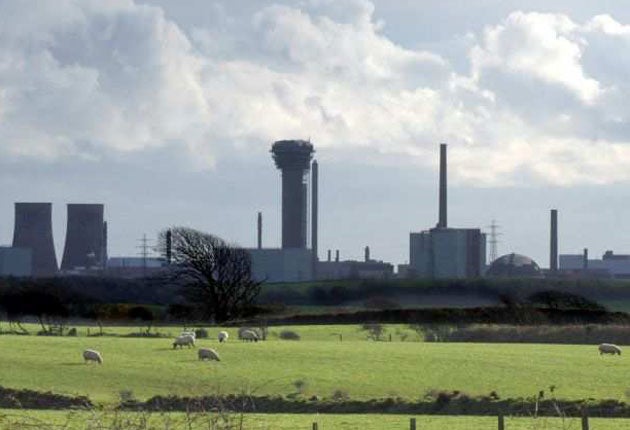The landscape of a nuclear Britain: but is it the best option?
Michael McCarthy weighs up the Government's energy strategy

The shape of a future nuclear-powered Britain became apparent yesterday when the Government published a list of potential sites for new atomic power stations.
The 11 locations listed in England and Wales, from Sellafield in Cumbria to Dungeness in Kent, are all sites of current or decommissioned nuclear stations, or very close to such. This means that in practice there is likely to be little opposition from local people, who are used to big nuclear facilities on their doorsteps and regard them as major sources of employment, although the Government is engaging in a month-long public consultation exercise to ascertain people's views.
However, there was anger yesterday from green campaigners and the Liberal Democrats who are firmly opposed to the renaissance of nuclear power in Britain.
Publication of the list was the latest indication that a new nuclear programme for the UK is now rolling remorselessly forward, after the Government firmly committed itself to including nuclear in the future British energy mix in January last year. There are three aspects of it which are significant: the political, the economic and the environmental.
POLITICS
Politically, it is no longer an issue between the two major parties. Although the Labour Government appeared to rule out new nuclear power stations as recently as 2003, it gradually shifted its position, with the backing of Tony Blair and Gordon Brown – nuclear enthusiasts both – and in the 2008 Nuclear White Paper, it unequivocally said that atomic energy should be part of a "low carbon future" for the British economy.
The case that ministers have accepted is that, unlike gas-fired and still more coal-fired power, nuclear is free of emissions of the carbon dioxide which is causing climate change – emissions which the UK has agreed to slash by a massive 80 per cent by 2050.
Perhaps even more pressing has been the argument for energy security. Several major coal-fired and nuclear stations are destined to close in the next decade and the Government does not want to fill the "energy gap" with supplies of gas from foreign countries such as Russia, which may be unreliable.
The Tories, after flirting with opposition to nuclear during David Cameron's initial "rebranding" of the party, have accepted these arguments, and have swung round in its favour. The Liberal Democrats, alone of the major parties, remain resolutely anti-nuclear, and their leader Nick Clegg said of the government announcement: "I think they are making a huge mistake in committing billions of pounds of taxpayers' money on a failed and wasteful way of producing energy."
ECONOMICS
Indeed, the economics of nuclear have long been regarded as one of its weakest points. But the three international bidders now vying to build atomic stations in Britain are all in the private sector, and all appear to believe they can make healthy profits. The first is the giant French energy company EDF, which already owns several of the existing British nuclear stations, and the other two are consortia: one of the giant German-owned energy utilities, RWE and E.ON, and the other of the Spanish utility Iberdrola, linked with the French company GDF and the British firm Scottish and Southern Energy.
All three are likely to build new British stations. The first construction is likely to start in 2011 or 2012, and the first new station to be operational in about 2017. Despite the enormous initial capital outlay – a rough ballpark figure for a new nuclear power plant would be £2bn plus – one of the attractions of nuclear stations is that the running costs are tiny, with the nuclear fuel only needing to be replaced every 18 months. Running costs of coal-fired power stations, on the other hand, and still more of gas-fired stations, are enormous and dwarf construction costs over a plant's lifetime.
ENVIRONMENT
The potential environmental problems have by no means gone away. We are still a long way from having a permanent storage site for the most dangerous of the nuclear waste which reactors produce, and many people still vividly remember the accident at Chernobyl in 1986, when an exploding Russian reactor sent a cloud of radioactive pollution right across Europe.
"Nuclear power leaves a deadly legacy of radioactive waste that remains highly dangerous for tens of thousands of years and costs tens of billions of pounds to manage," said Friends of the Earth's energy campaigner, Robin Webster. "Building new reactors would divert precious resources from developing safe, clean renewable power. Ministers must exploit the UK's huge potential of wind, solar, marine and hydro power, and embark on a massive national programme of energy efficiency."
Join our commenting forum
Join thought-provoking conversations, follow other Independent readers and see their replies
Comments